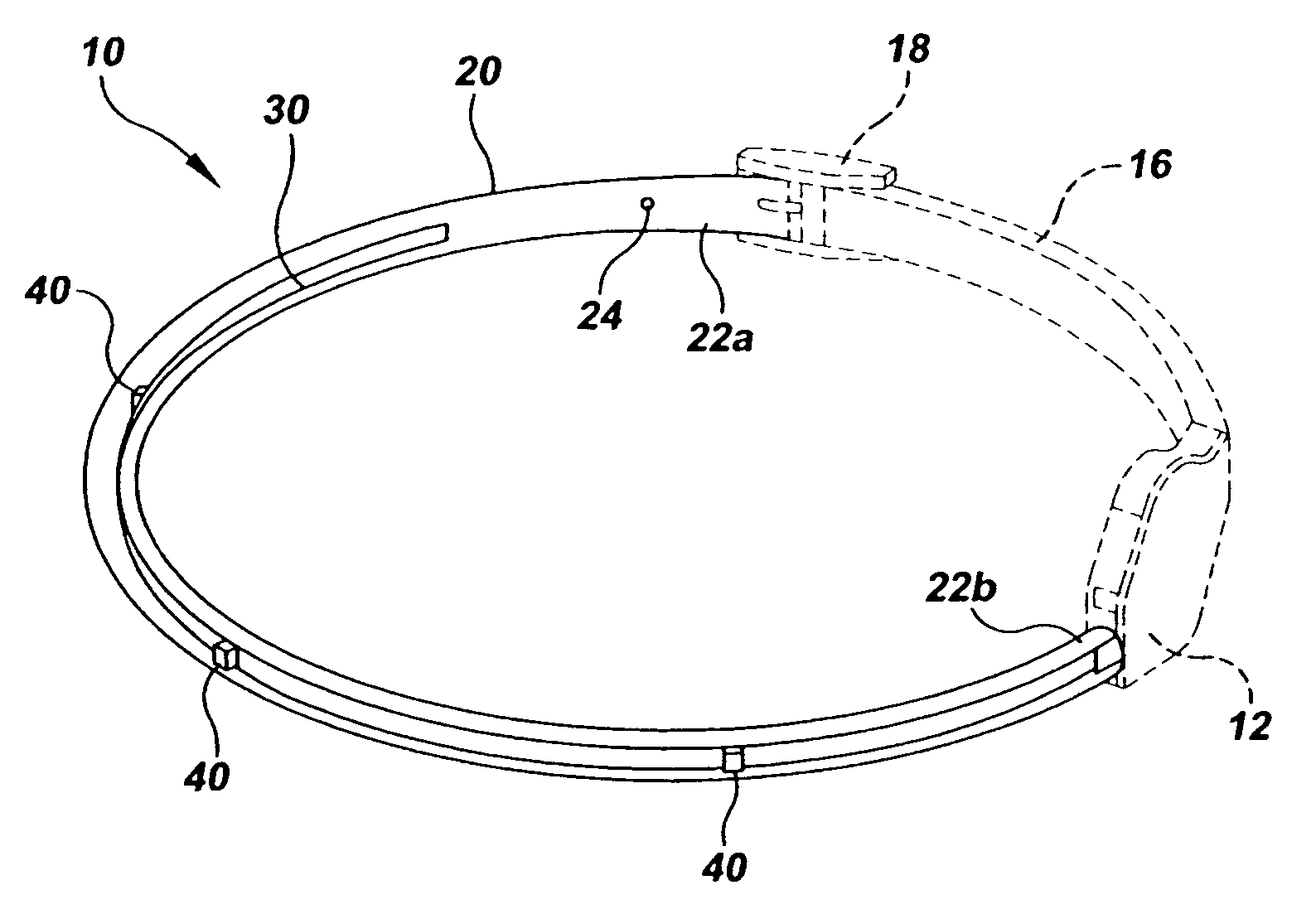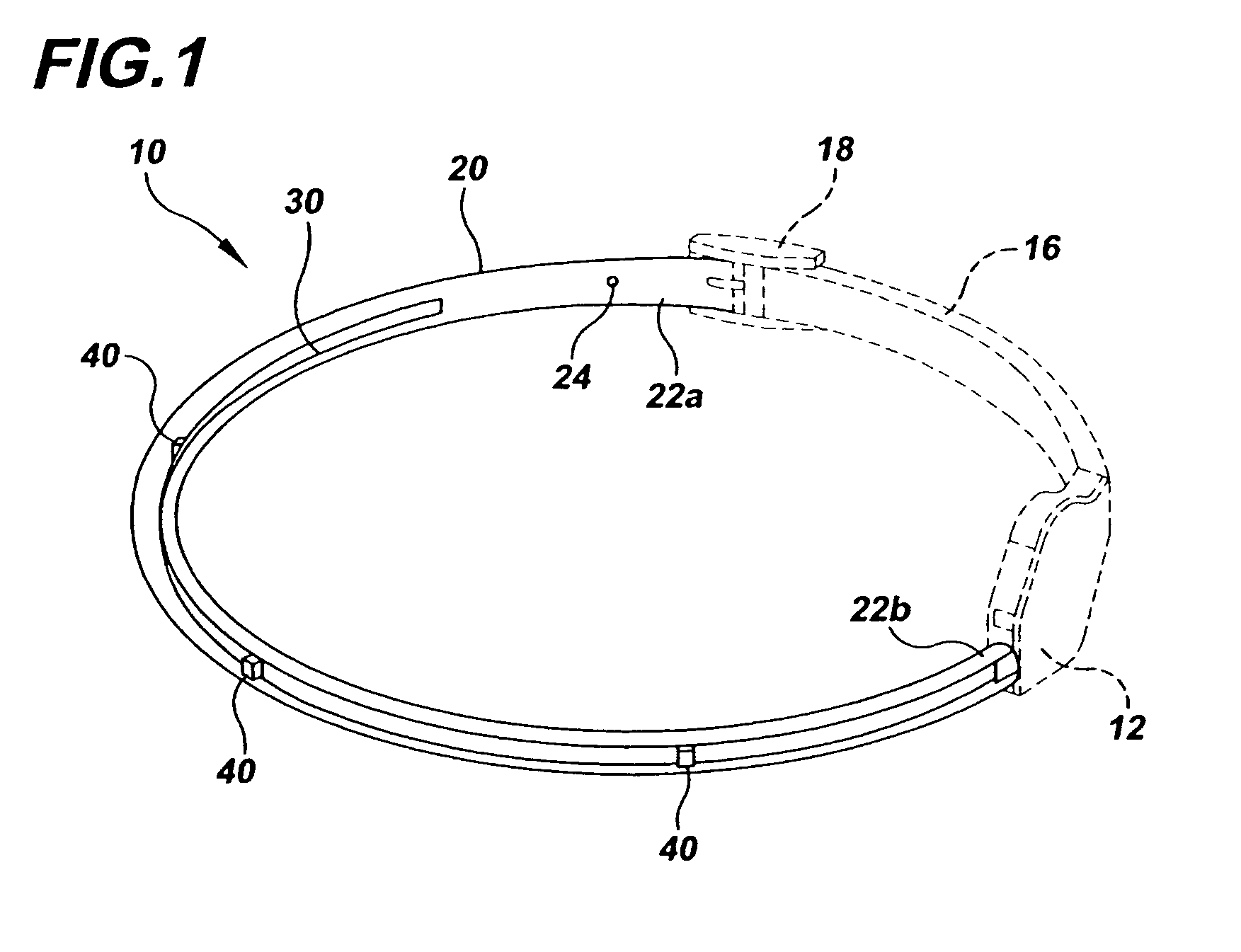Pet tracking collar
a tracking collar and pet technology, applied in the field of tracking devices, can solve the problems of rapid corrosion and deterioration, rapid failure of lighting features, etc., and achieve the effect of preventing receiver overloading
- Summary
- Abstract
- Description
- Claims
- Application Information
AI Technical Summary
Benefits of technology
Problems solved by technology
Method used
Image
Examples
Embodiment Construction
)
[0036]In describing the preferred embodiment of the present invention, reference will be made herein to FIGS. 1–13 of the drawings in which like numerals refer to like features of the invention.
[0037]This invention is directed to a lighted pet tracking collar that operates on a watch-type battery to render animals visible during the night that further incorporates an AM, FM, UHF or other wireless transmitter configured so as to enable location of a lost or out of sight animal through the use of a small direction-indicating handheld receiver. The preferred embodiment of the pet tracking collar 10 is depicted in FIGS. 1–11, and includes a battery housing 12 having attached on one end a flexible nylon strap 16 and buckle 18, and on the opposite end a flexible clear plastic tubing 20 having a compressed and heat-sealed free end 22a with an opening 24 for engagement with the buckle tab. Membrane switch 11 on the back of housing 12 (FIGS. 5 and 11) is connected to the microprocessor and ...
PUM
 Login to View More
Login to View More Abstract
Description
Claims
Application Information
 Login to View More
Login to View More - R&D
- Intellectual Property
- Life Sciences
- Materials
- Tech Scout
- Unparalleled Data Quality
- Higher Quality Content
- 60% Fewer Hallucinations
Browse by: Latest US Patents, China's latest patents, Technical Efficacy Thesaurus, Application Domain, Technology Topic, Popular Technical Reports.
© 2025 PatSnap. All rights reserved.Legal|Privacy policy|Modern Slavery Act Transparency Statement|Sitemap|About US| Contact US: help@patsnap.com



